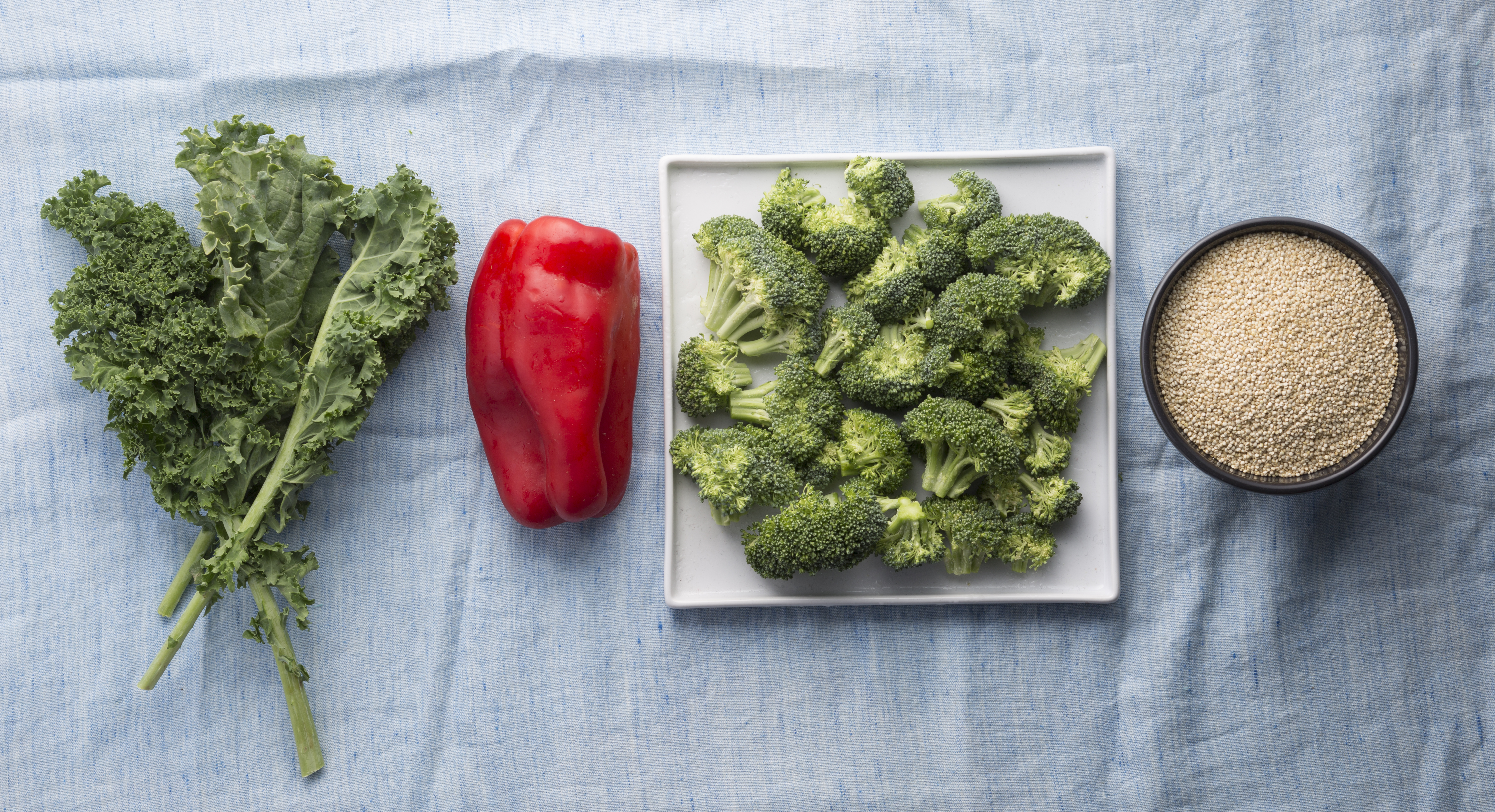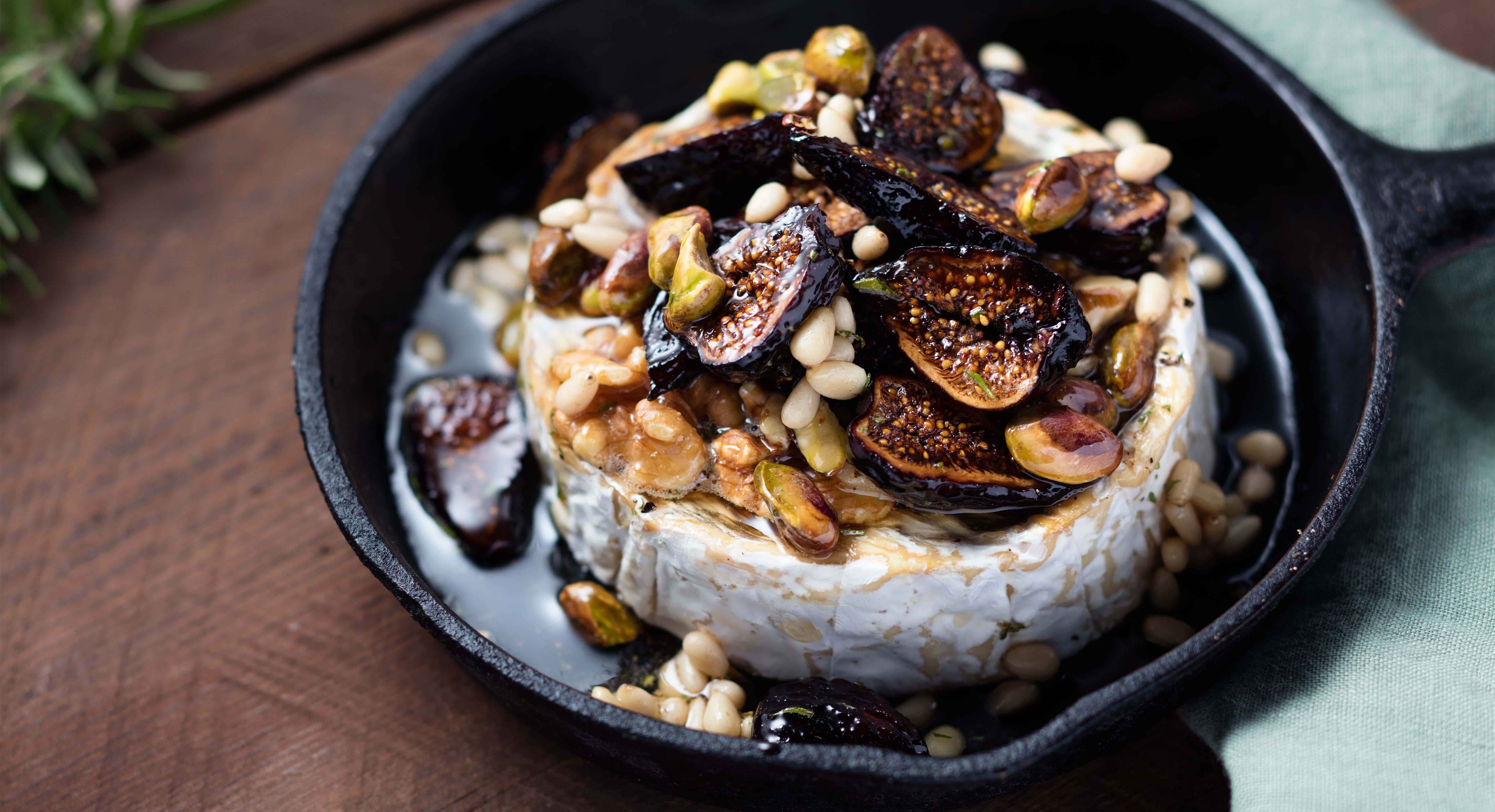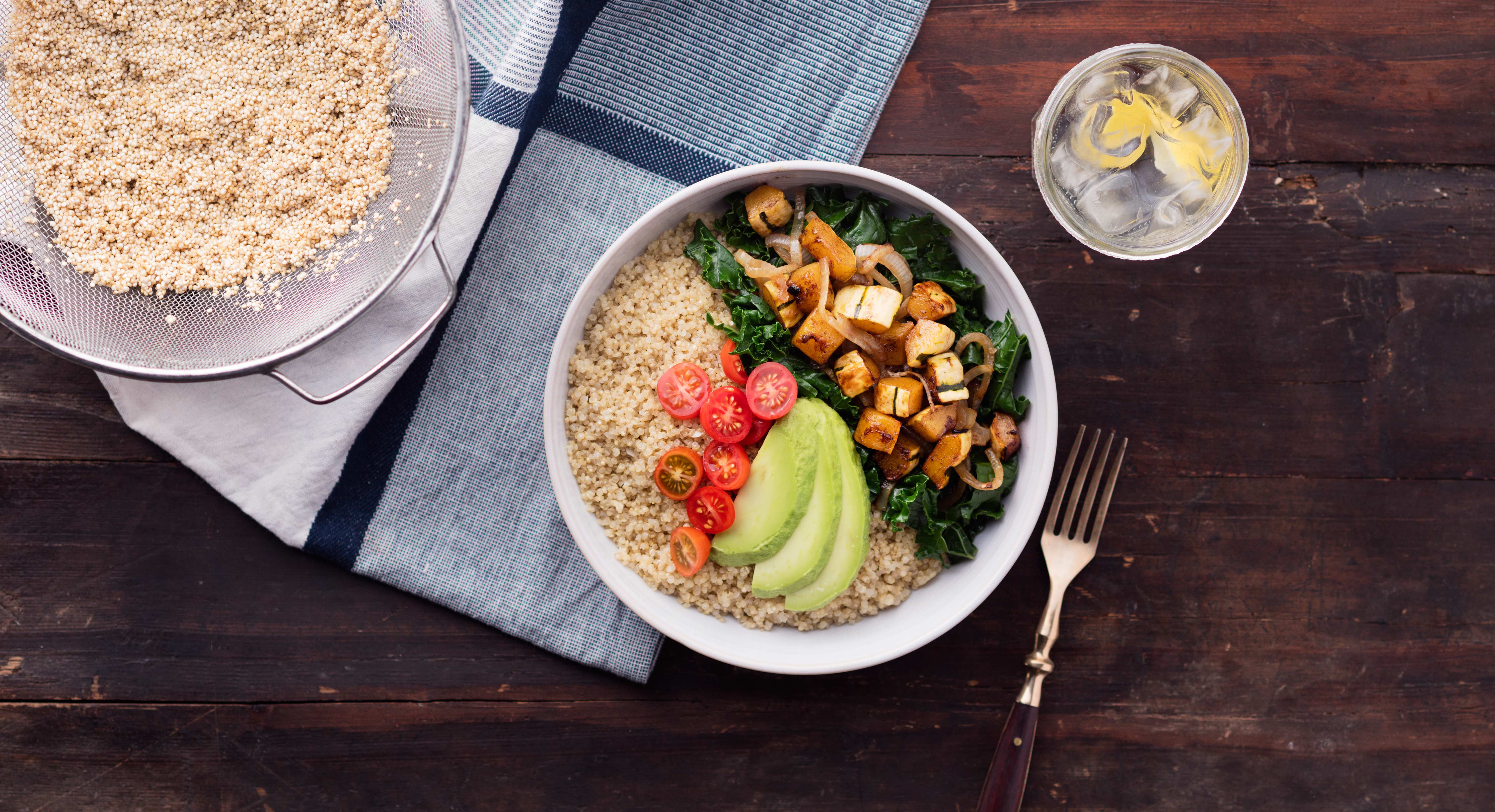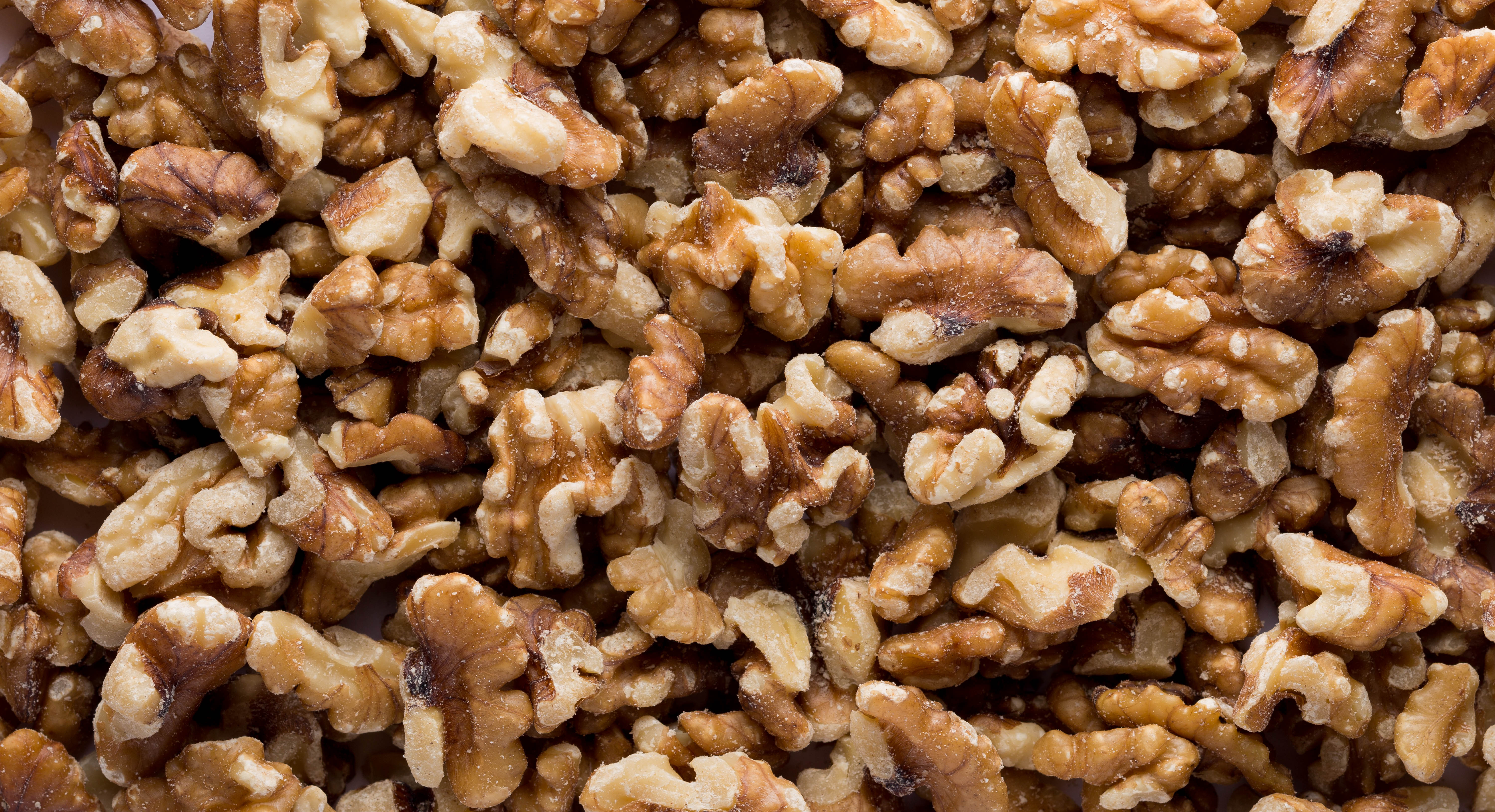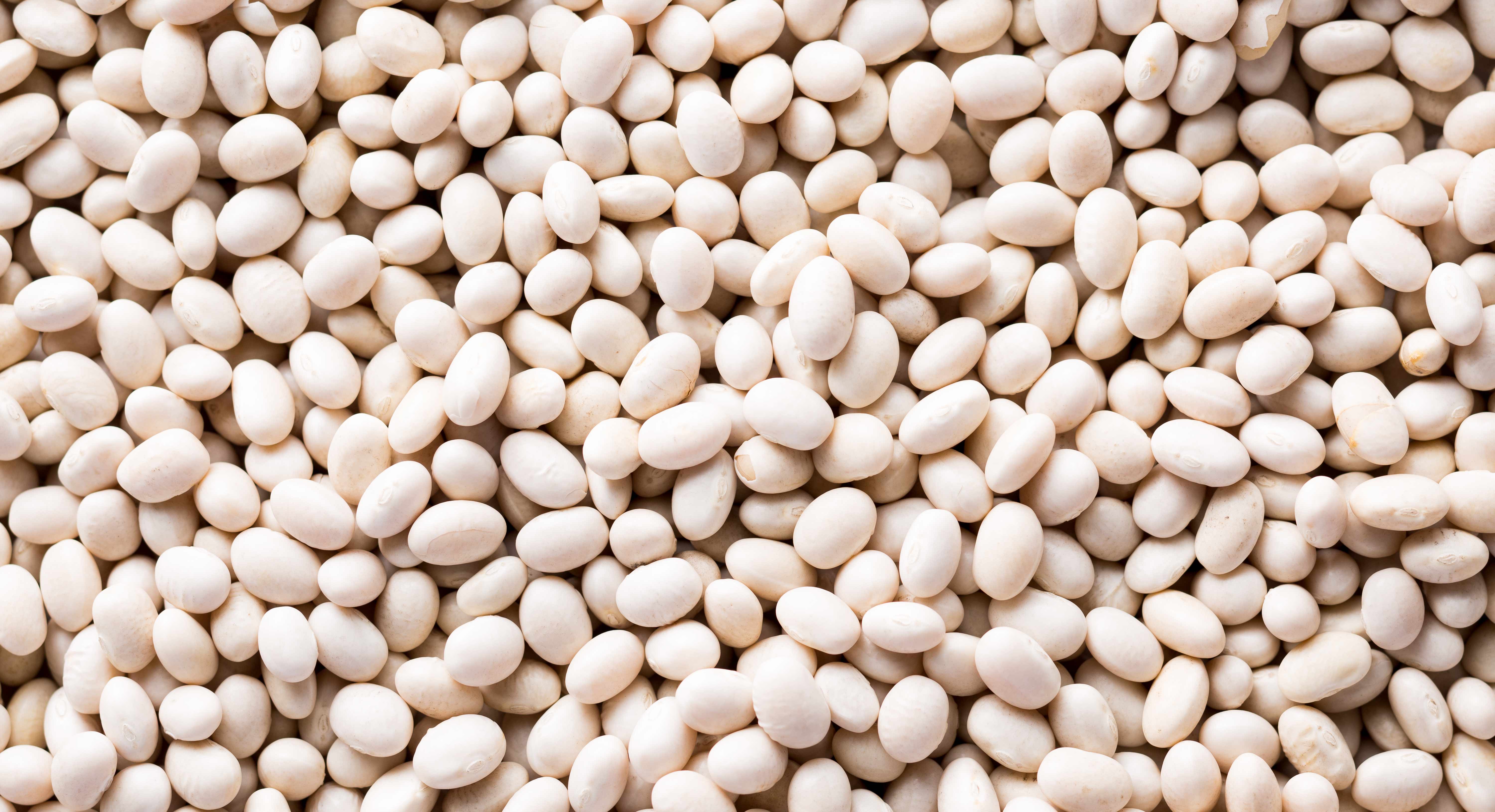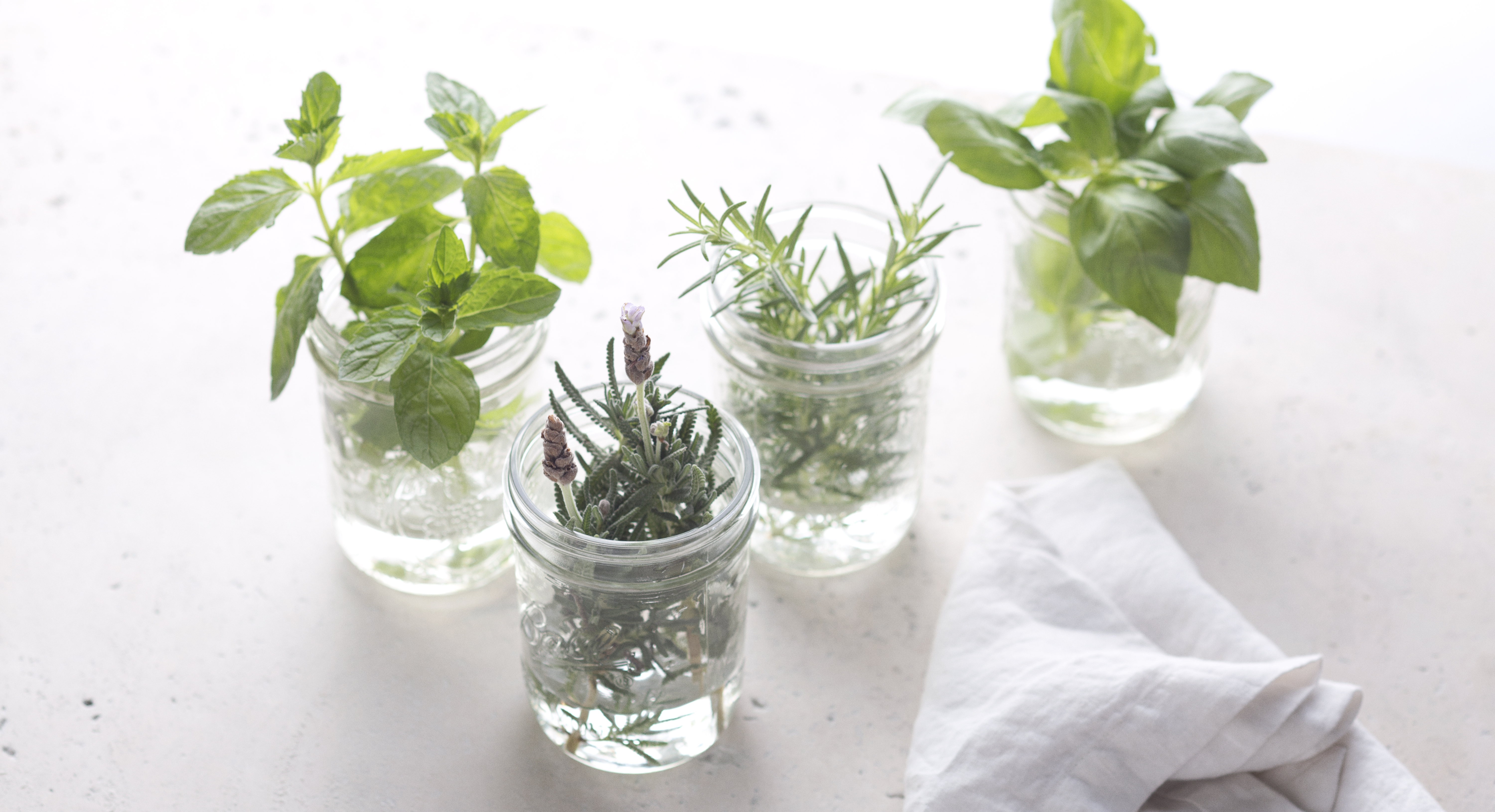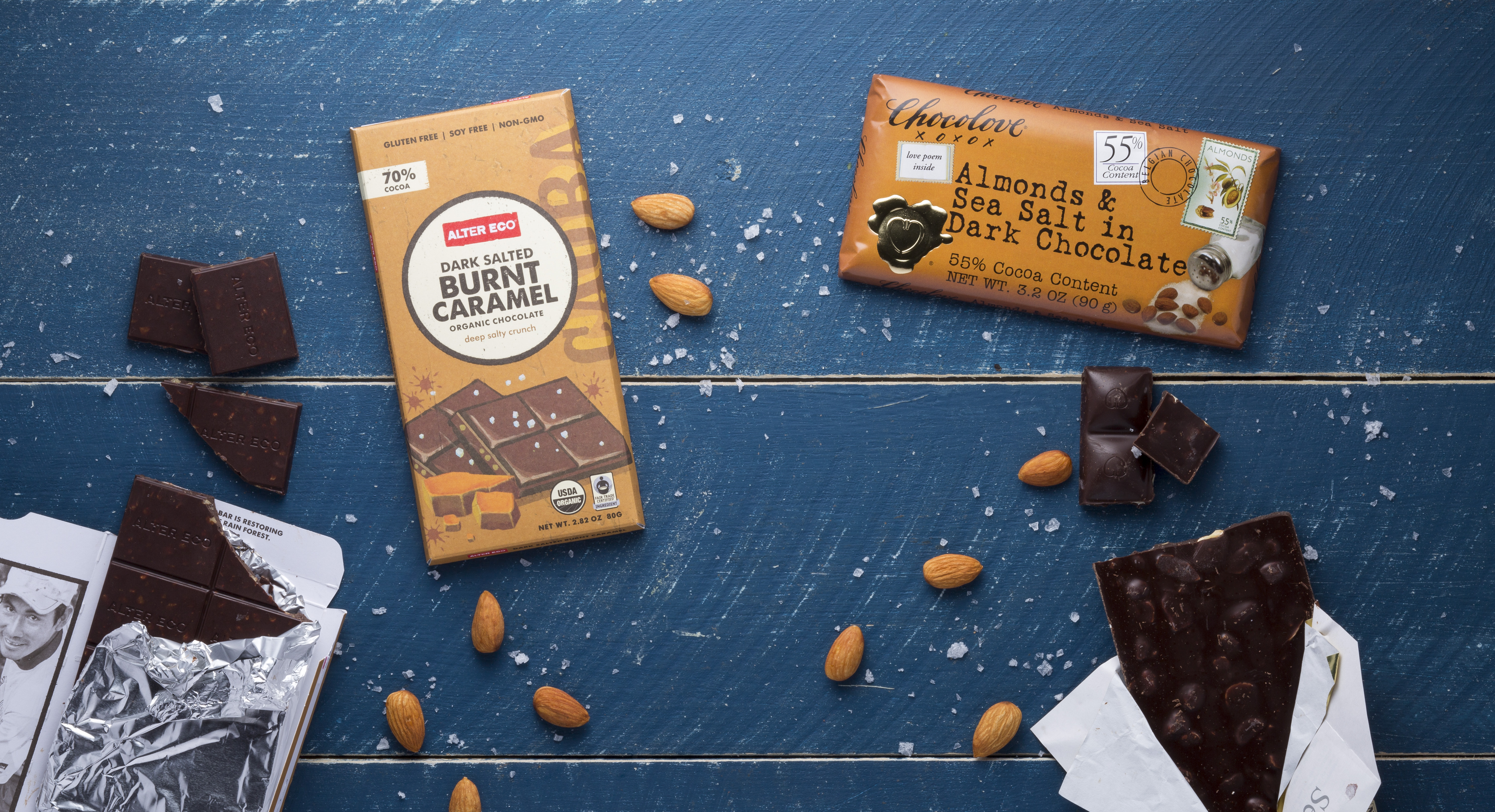Nowadays perusing grocery store shelves can mean getting inundated with the words “gluten-free” on everything from pasta to spinach to soda. That ubiquitous label only makes us more afraid of where gluten could possibly be lurking—if it’s in soy sauce, ketchup, and French fries, it could be anywhere, right? And if you actually have Celiac disease or a gluten intolerance, your fears of any foods that aren’t blatantly declared GF might be reaching a fever pitch right about now.
If you’ve been wondering what you can safely eat—and what to avoid entirely—look no further. Here’s our complete guide to gluten in food, including a comprehensive list of gluten-free foods AND a list of foods to avoid that sometimes, or almost always, contain gluten. We also run down how to decode product labels and spot ingredients that might indicate that a particular item contains gluten. Let’s get to the bottom of this once and for all.
Naturally gluten-free foods
When you spot a gluten-free label on a jar of almond butter, it kind of messes with your mind, right? Almonds don’t have any wheat, so why would it even be a question? Well, cross-contamination with gluten products may be an issue in some cases, as well as fillers in items like ice cream, jams, and jellies. (Foods that may contain fillers are noted below with an asterisk, and a comprehensive list of ingredients to look out for in these cases is included here, too.)
Fortunately, many, many real foods are naturally gluten-free—and you really don’t have to worry about them at all! Here’s a rundown.
Fresh vegetables
Whether they’re labeled gluten-free or not, fresh vegetables don’t have any gluten. Good thing—veggies should be the pillar of a healthy diet for everyone, including those who eat gluten-free. Consuming a wide variety is best, so take your pick of these:
- Acorn
- Agar
- Alfalfa
- Algae
- Artichoke
- Arugula
- Asparagus
- Avocado
- Bell Pepper
- Broccoli
- Brussel Sprouts
- Cabbage
- Cauliflower
- Carrots
- Celery
- Corn
- Cucumber
- Eggplant
- Garlic
- Green Beans
- Kale
- Lettuce
- Mushrooms
- Okra
- Onions
- Peas
- Peppers
- Potatoes (white and sweet)
- Pumpkins
- Radish
- Spinach
- Squash
- Turnips
- Watercress
Fresh fruits
The same goes for fresh fruits. When you pick up a banana, you should have no doubt in your mind it’s safe to eat. Enjoy everything from acai to watermelon!
- Acai
- Apples
- Apricot
- Avocado
- Bananas
- Blackberries
- Blueberries
- Cantaloupe
- Carob
- Cherimoya
- Cherries
- Coconut
- Cranberries
- Currants
- Dates
- Figs
- Grapes
- Guava
- Honeydew melon
- Kiwi
- Kumquat
- Lemons
- Limes
- Mangoes
- Oranges
- Papaya
- Passion fruit
- Peaches
- Pears
- Persimmons
- Pineapples
- Plantains
- Plums
- Pluots
- Pomegranate
- Quince
- Raspberries
- Strawberries
- Tamarind
- Tangerines
- Watermelon
Meat and fish
Animal protein is a-OK. Just remember, if you’re ordering from a restaurant, avoid meat that’s breaded or prepared with other ingredients that potentially contain gluten (more on that later).
- Alligator
- Beef
- Buffalo
- Chicken
- Duck
- Eggs
- Fish
- Goat
- Goose
- Lamb
- Pork
- Quail
- Rabbit
- Shellfish
- Snake
- Turkey
- Veal
- Venison
Dairy
You have to give up most bread when you go gluten-free, but thankfully, cheese, butter, and everything listed below are generally in the safe zone. Whew! A couple of exceptions that may have gluten: processed cheese and bleu cheeses.
- Butter*
- Casein
- Cream
- Goat cheese
- Ice cream*
- Milk
- Plain, unflavored yogurt and Greek yogurt
- Real cheese
- Sour cream
- Whey*
Gluten-free grains and grain alternatives
Yes! You can hold onto your grain game. A lot of people don’t know there are tons of gluten-free grains:
- Amaranth
- Arrowroot
- Brown rice
- Buckwheat groats (also known as kasha)
- Corn
- Gluten-free oats
- Millet
- Mung bean noodles
- Quinoa
- Rice noodles
- Sorghum
- Tapioca
- Teff
- White rice
Gluten-free flours
It keeps getting better, right? Gluten-free baking can be a little tricky, because gluten protein is the thing that gives most baked goods their spongy texture. But with these flour alternatives, you can still make delicious breads, cakes, and even cookies. Comb through our arsenal of GF recipes to get inspired!
- Almond flour
- Amaranth flour
- Arrowroot flour
- Baking yeast (not brewer’s yeast)
- Bean flour
- Brown rice flour
- Buckwheat
- Cassava flour
- Corn flour
- Corn meal
- Corn starch
- Cottonseed meal
- Dal flour
- Garbanzo bean flour
- Pea flour
- Polenta
- Potato flour
- Sago flour
- Sorghum flour
- Soy Flour
- Tapioca Flour
- Taro Flour
Cooking fats
More ways to keep your gluten-free diet healthy and satisfying—fats are vital for your body and brain, and naturally gluten-free, so don’t shy away from them! Fats also do a lot of the heavy lifting to add tons of flavor to any dish.
- Avocado oil
- Canola oil
- Coconut oil
- Grapeseed oil
- Olive oil
- Pumpkin oil
- Walnut oil
Nuts and seeds
Speaking of beneficial fats, nuts and seeds also provide essential fatty acids and energy. Not to mention, they’re much healthier to snack on than conventional crackers you have to give up when you go gluten-free. Win-win.
- Almonds
- Brazil nuts
- Cashews
- Chia seeds
- Flaxseeds
- Hemp seeds
- Pecans
- Pistachios
- Pumpkin seeds
- Sunflower seeds
- Sesame seeds
- Walnuts
Canned legumes*
Legumes are naturally gluten-free, but some dried varieties may have been cross-contaminated with gluten products. Canned legumes are generally safe as long as there are no added sauces, seasonings, or flavoring.
- Black beans
- Black-eyed peas
- Cannellini beans
- Fava beans
- Garbanzo beans/chickpeas
- Kidney beans
- Lentils
- Lima beans
- Navy beans
- Pinto beans
Fresh herbs
With fresh herbs, you’re good to go—your GF meals will never fail to be flavorful! As for dried spices*, make sure there are no fillers (see below).
- Basil
- Cilantro
- Coriander
- Cumin
- Mint
- Parsley
- Rosemary
- Sage
- Thyme
Miscellaneous
Aside from the food groups above, there are a few miscellaneous items that you can pretty much trust are gluten-free:
- Artificial sweeteners
- Baking soda
- Cacao
- Chocolate
- Cocoa
- Fresh fruit juice
- Honey
- Jam and Jelly*
- Jelly*
- Maple syrup
- Most unflavored liquors (except some bourbons)
- Mustard
- Natural sugar substitutes
- Popcorn
- Sugars
- Vanilla
- Vinegar
- Wine
- Xanthan gum
Popular gluten-free foods
At Thrive Market, we make shopping for gluten-free products totally easy. Visit our Gluten-Free value page and go from there.
Here are some of our most popular GF offerings:
- Gluten-Free Starter Kit: This kit is perfect for newbies to the GF lifestyle! Some of the highlights: healthified mac and cheese, our favorite popcorn, coconut aminos (your new soy sauce alternative).
- Jovial Brown Rice Penne Rigate: Brown rice penne takes the guesswork out of whether or not you can eat pasta or not.
- Mary’s Gone Crackers: Crackers aren’t completely off limits. Mary’s are super crunchy and made with whole grain brown rice, quinoa, flaxseeds, and sesame seeds.
- LaraBar Coconut Cream Pie Bar: Here’s a dessert-y bar that’s filled with coconut, cashews, and almonds, and tasty enough to satisfy pastry cravings.
- Calbee Snapea Crisps: Another veggie-based snack. Warning: You might not be able to resist eating the whole bag in one sitting.
- Simple Mills Almond Flour Focaccia & Sandwich Bread Mix: Artisan bread made from a box—yes, please! So easy, and so good.
- Thrive Market Tamari Gluten-Free Soy Sauce: Soy sauce typically has gluten, but tamari doesn’t, and they taste pretty much identical.
Gluten foods to avoid
Now the bad news—there are quite a few foods that you’ll have to give up when you quit gluten. But in some cases, you’ll still be able to find some gluten-free options of your favorite breads, pastas, and cereals.
Note: Remember that “wheat-free” doesn’t necessarily mean “gluten-free.” When in doubt, always check for the gluten-free label when it comes to these items.
Foods that definitely contain gluten
Just like some foods like fresh fruits and veggies are undoubtedly gluten-free, there are some that are all about the gluten—namely grains and starches. Avoid the following.
- Barley
- Bulgur
- Couscous
- Cracked wheat
- Durum
- Einkorn
- Emmer
- Farina
- Farro
- Fu
- Graham flour
- Kamut matzo
- Rye
- Semolina
- Spelt
- Seitan
- Triticale (a hybrid of wheat and rye)
- Wheat
- Wheat germ
- Wheat starch
Other foods that typically have gluten
You’ll probably have to say goodbye to a lot of your favorite carbs. More often than not, the following foods fall on the “avoid” list.
Pastas and noodles
Ordering up a heaping bowl of spaghetti and meatballs at a traditional Italian restaurant might be off limits. But gluten-free pasta is a thing, so you can still have it at home. Just beware of conventional pastas and noodles in these forms:
- Angel hair
- Dumplings
- Chow mein
- Egg noodles
- Fettucine
- Gnocchi
- Linguine
- Ramen noodles
- Ravioli
- Soba noodles
- Spaghetti
- Udon noodles
Breads
It hurts to say this, but you’ll have to drop the bread basket! So even if you have to generally pass on the unlimited breadsticks and pancake stacks when you eat out, you’ll still be able to find gluten-free alternatives of some of these favorites.
- Bagels
- Biscuits
- Cornbread
- Crepes
- Croissants
- Croutons
- Flatbreads
- Flour tortillas
- Focaccia
- French toast
- Naan
- Pancakes
- Panko breadcrumbs
- Pita
- Potato bread
- Rolls
- Waffles
Baked goods
Yup, anything lurking in the oh-so-tempting pastry case at the local coffee shop is dangerous. But on the bright side, going gluten-free gives you a good excuse to drop these high-calorie, fattening items altogether.
- Brownies
- Cakes
- Cookies
- Donuts
- Muffins
- Pies
Miscellaneous foods
Most likely, these foods are made with gluten-containing ingredients, so it’s best to avoid them unless they’re labeled gluten-free.
- Corn flakes
- Crackers
- Cream sauces
- Granola
- Pretzels
- Rice puffs
- Soy sauce
- Stuffing
Other foods that might have gluten
Then there are those items that appear fair game, but might not be. For example, meatballs and veggie burgers may be made with breadcrumbs and flour. Cream-based soups and gravy are often thickened with flour, too. And while legumes and spices are naturally gluten-free, some dried varieties may have been cross-contaminated with gluten products. You may notice a trend here—the basic rule of thumb is, for any processed item, do a pass of the ingredients list to make sure you’re in the clear. Here are some of the foods that might need further investigation before indulging.
- Baking powder
- Beer
- Blue cheeses
- Breaded foods
- Brewer’s yeast
- Candy
- Canned baked beans
- Cereals
- Cheesecake
- Cold cuts
- Commercial bouillon and broths
- Cream-based soups
- Dried spices
- Egg substitute
- Energy bars
- Flavored alcohol
- Flavored coffees and teas
- French fries
- Fried vegetables/tempura
- Fruit fillings and puddings
- Gravy
- Hot dogs
- Ice cream
- Imitation bacon bits
- Imitation crab meat
- Instant hot drinks
- Ketchup
- Malt and malt flavoring
- Malt vinegar
- Marinades
- Mayonnaise
- Meatballs
- Multigrain tortillas and tortilla chips
- Non-dairy creamer
- Oats (unless certified gluten-free)
- Oat bran (unless certified gluten-free)
- Potato chips
- Pre-made chocolate milk
- Processed cheese
- Roasted nuts
- Root beer
- Salad dressing
- Seasonings
- Seitan
- Some bourbons
- Soy sauce
- Syrups
- Tabbouleh
- Teriyaki sauce
- Trail mix
- Veggie burgers and other meat substitutes
- Wheatgrass
- Wine coolers
Miscellaneous sources of gluten
As if food weren’t enough to worry about! Gluten may be lurking in anything from shampoo to vitamins, and if you’re extremely sensitive, these products—even applied topically—might cause adverse reactions. Here are some everyday items that may be harboring gluten (but if you are extra sensitive, stick to trusted GF brands).
- Cosmetics
- Lipsticks, lip balm
- Medications
- Non self-adhesive stamps and envelopes
- Play-doh (Check out our gluten-free play-doh recipe!)
- Shampoos
- Vitamins and supplements (check label)
Red-flag ingredients
If you’re gluten-free, it’s good to know how to decode product labels. This list should help—*if you spot any of these ingredients in a product, it could mean there’s gluten inside.
- Amino peptide complex
- Avena sativa Cyclodextrin
- Brown rice syrup
- Caramel color (frequently made from barley)
- Dextrin
- Fermented grain extract
- Gliadin
- Hordeum distichon
- Hordeum vulgare
- Hydrolysate
- Hydrolyzed malt extract
- Hydrolyzed soy protein
- Hydrolyzed vegetable protein
- Maltodextrin
- Modified food starch
- Natural flavoring
- Phytosphingosine extract
- Secale cereale
- Tocopherol/vitamin E
- Triticum aestivum
- Triticum vulgare
- Yeast extract
So there you have it. While your approach to bread and pasta might never quite be the same again, now you know how to safely stay gluten-free. And you can take comfort in the fact that some of the most wholesome foods out there are right at home in a GF diet!
Photo credit: Paul Delmont and Alicia Cho
Download the app for easy shopping on the go
By providing your mobile number, you agree to receive marketing text messages from Thrive Market. Consent not a condition to purchase. Msg & data rates apply. Msg frequency varies. Reply HELP for help and STOP to cancel.
This site is protected by reCAPTCHA and the Google Privacy Policy and Terms of Service apply.
